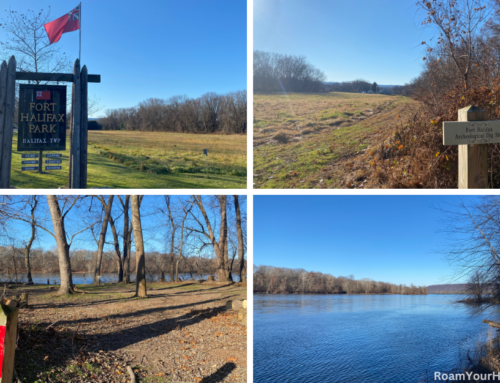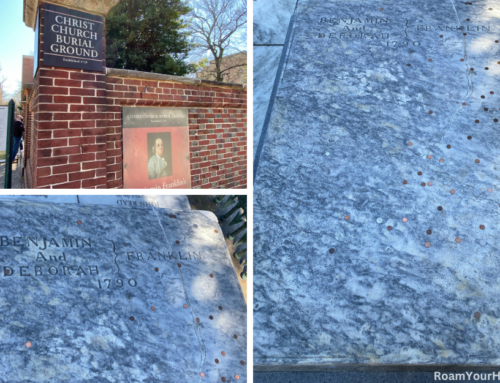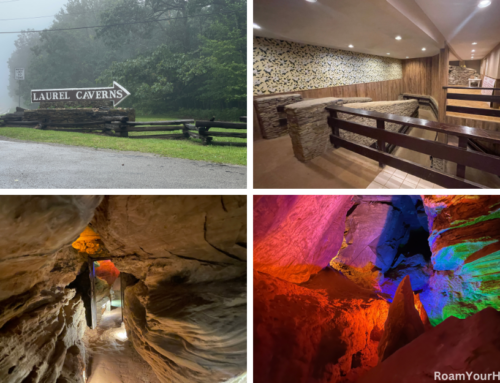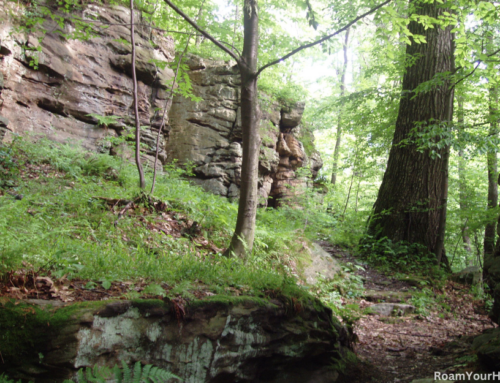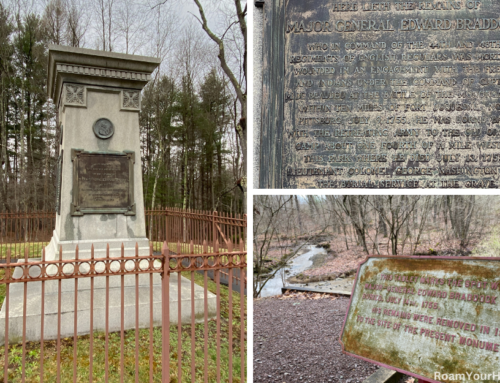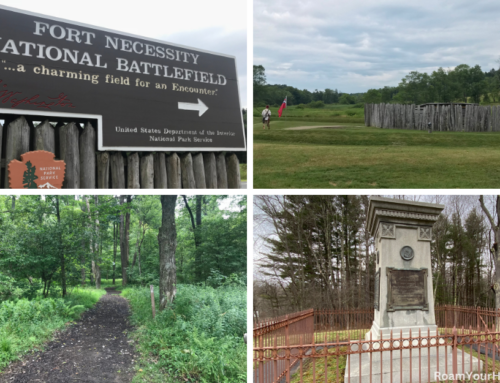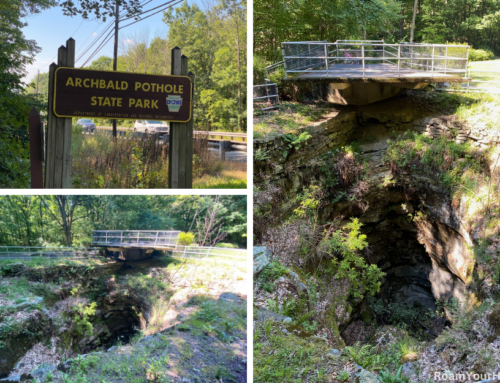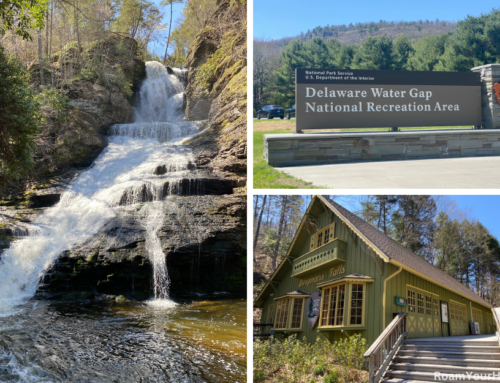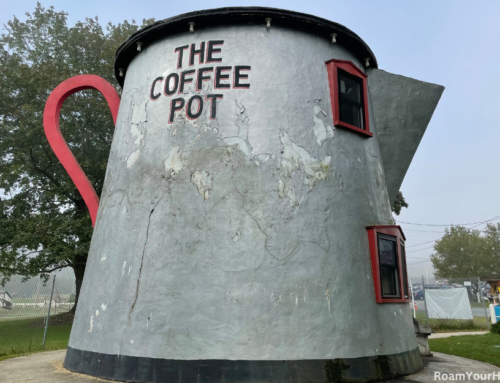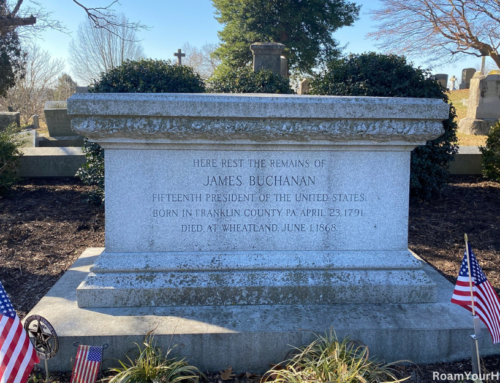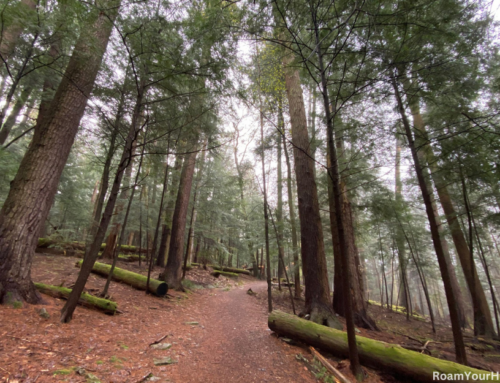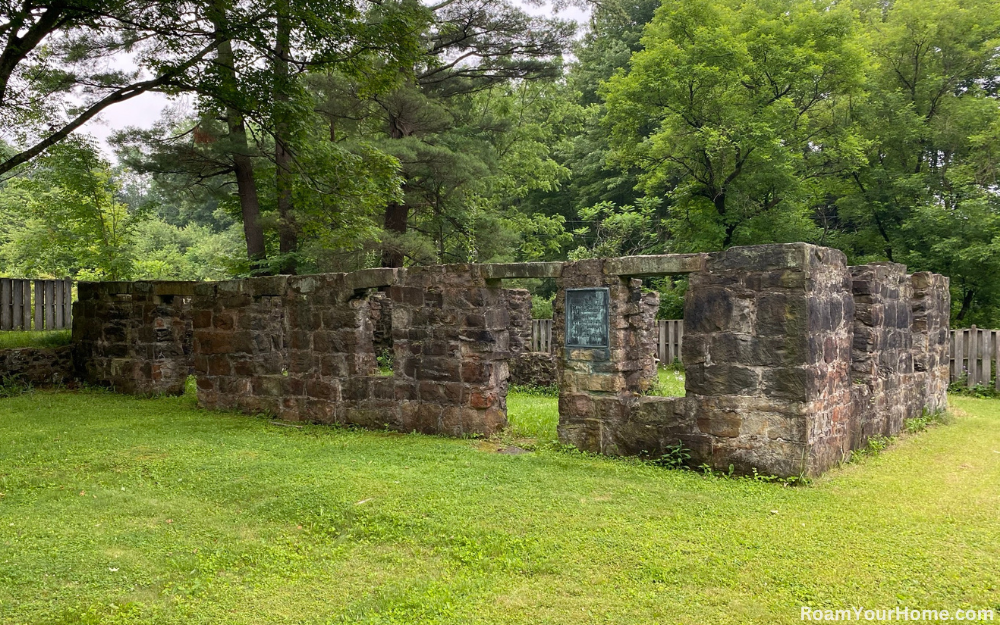
Exploring John Brown’s little known Pennsylvania Home
John Brown is a name synonymous with fighting for the abolition of slavery in the United States. In the decade before the Civil War, Brown would rise to national prominence for his radical abolitionism and fighting in Bleeding, Kansas. He would eventually be executed on December 2, 1859, for his role in leading the rade of the arsenal at Harper’s Ferry.
While famous for his roles in fighting to end slavery, Brown led a quieter life when he was younger. Today, remnants of this more peaceful time can be seen at the John Brown Tannery in rural northeastern Pennsylvania.
My wife and I arrived at midday on a cloudy summer afternoon. I had no clue what to expect; I just noticed the site on the map as we were making our way towards Erie.
As we drove there, the landscape was dotted with small farms and stands of forest. We came in from the southeast after an enjoyable stop at Oil Creek State Park, home to the nation’s first successful commercial oil well. The site is located off a dirt road in Crawford County, PA. We pulled into the parking lot, and we were the only car there. It was hot, muggy Pennslyvania, with thick, heavy, humid air, free of all pollution. It was lovely.
We hopped out right in front of the tannery’s remains. The only thing that remains are the stone foundation walls of John Brown’s tannery. A fire in 1907 burned down the original wooden portions. . There were no fences, and we were free to walk through the ruins. The mat of wet, bright green, and well-cared-for grass surrounded the rock walls on all sides.
It did not take long to walk around the half-acre site; we only spent 15 minutes. Brown’s first wife, Dianthe, is buried nearby. We did not walk over to the cemetery, it was not clear if it was on private property or not.
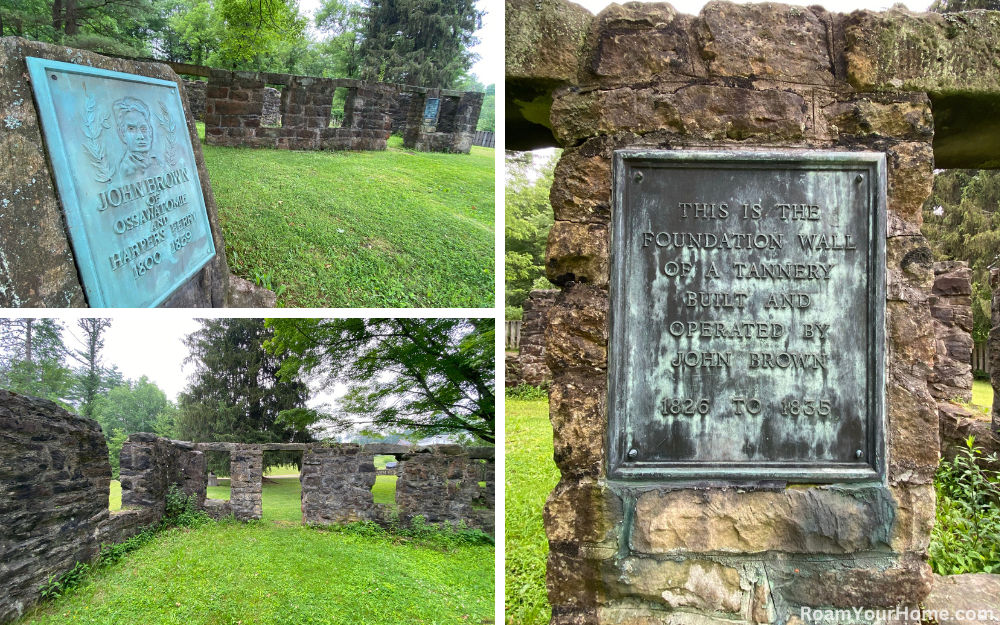
John Brown used the tannery site to help slaves escape to freedom.
There were not many informational signs at the site—just a Pennsylvania Historical marker explaining that Brown lived here from 1825-35. I wish there was more information about the site. Later that night, I was reading about it, and what I discovered was fascinating. At the tannery site, John Brown played a huge role in helping thousands of slaves to freedom.
John Brown, his wife Dianthe, and their three children moved to the New Richmond site in 1825 from Hudson, Ohio. This would become the place he lived the longest, ten years in total. He wanted to start a new tannery business there and help runaway slaves via what would become known as the Underground Railroad.
Brown bought 200 acres and built a cabin for his family, a barn, and a two-story tannery, complete with a secret room to hide escaping slaves. He organized a church, was appointed postmaster of the community, and surveyed roads to earn extra money.
Brown would move escaped slaves toward New York in a wagon he used to deliver mail, haul tannery hides, or move survey equipment.
From 1825 to the time John Brown moved in 1835, it’s estimated he helped pass about 2,500 slaves. He made a small tannery in tiny New Richmond a major stop along the Underground Railroad.
How to get to the John Brown Tannery Site
From Meadville, Pennsylvania, go about 12 miles east on State Route 77. Then, turn right onto John Brown Road and continue a short distance to the tannery site on the right-hand side. State historical markers on both Route 77 and John Brown Road point out the location.

